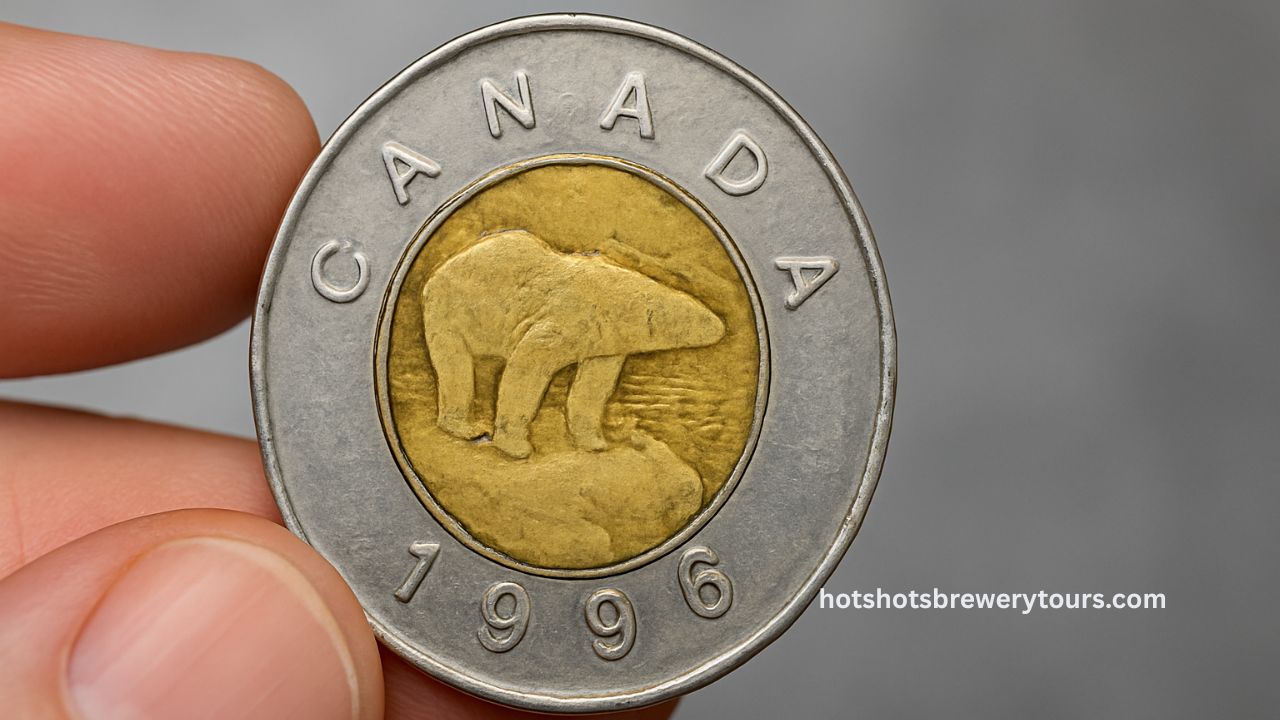In the realm of numismatics, certain coins transcend their face value due to unique characteristics or errors during minting.
One such coin is the 1996 Canadian Toonie, which has recently garnered significant attention for its error variant featuring a polar bear design, leading to a record-breaking sale.
The 1996 Toonie: A Brief Overview
The 1996 Toonie marked Canada’s introduction of the two-dollar coin, replacing the paper bill. This bimetallic coin features a polar bear on one side and Queen Elizabeth II on the other.
While millions were minted, certain error coins from this batch have become highly sought after by collectors.
Notable Error Variants
Several error variants of the 1996 Toonie have been identified:
- Uncentered Core Error: The inner core is misaligned, leading to an off-center appearance.
- German Planchet: Coins struck on planchets supplied by Germany, distinguishable by specific surface characteristics.
- Cigar and Horn Varieties: Named for distinctive die errors resembling a cigar shape or horn on the polar bear design.
Record-Breaking Sale
A recent sale highlighted the value of these error coins. A 1996 Toonie with an uncentered core error was listed on eBay for $30.00 USD, attracting multiple watchers and interest from collectors.
While this price may seem modest, it’s significantly higher than the coin’s face value, underscoring the premium collectors place on such errors.
Comparative Values
To understand the market better, here’s a table showcasing various 1996 Toonie variants and their approximate values:
| Variant | Description | Approximate Value (USD) |
|---|---|---|
| Standard Circulated | Regular coin with no errors | $2.00 – $5.00 |
| Uncentered Core Error | Inner core misaligned | $30.00 – $175.00 |
| German Planchet | Struck on German-supplied planchets | $34.00 – $694.00 |
| Cigar Variety | Die error resembling a cigar shape | $9.80 – $73.50 |
| Horn Variety | Die error resembling a horn on the polar bear | $39.20 – $147.00 |
Note: Values are approximate and can vary based on coin condition and market demand.
Factors Influencing Value
Several factors contribute to the value of these error coins:
- Rarity: Fewer error coins mean higher demand.
- Condition: Coins in mint or near-mint condition fetch higher prices.
- Type of Error: Some errors are more visually striking or historically significant, increasing their desirability.
The 1996 Canadian Toonie serves as a testament to how minting errors can transform everyday currency into valuable collectibles.
For collectors and enthusiasts, these coins offer a glimpse into the intricacies of coin production and the allure of rare finds.
FAQs
How can I identify a 1996 Toonie error coin?
Look for anomalies such as misaligned inner cores, unusual surface textures, or distinctive die errors on the polar bear design. Consulting a numismatic expert or reference guide can provide further assistance.
Are all 1996 Toonies with errors valuable?
While many error coins hold increased value, the specific type and visibility of the error, combined with the coin’s condition, determine its market worth.
Where can I sell or buy these error coins?
Online marketplaces like eBay, specialized coin dealers, and numismatic auctions are common platforms for trading such coins.
